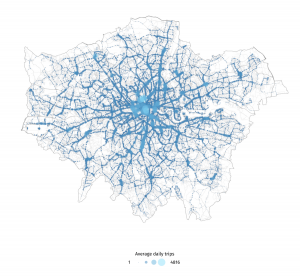Measuring Comparative Public Transport Accessibility for GB Cities
While Greater London has a comprehensive transit network, this is not a fair representation of UK cities where underinvestment and privatisation has seen many bus, metro and rail networks stagnate in recent decades, falling well behind European and Asian peers. Improving public transport is an important aspect of addressing the UK’s high regional inequality and … Continue reading Measuring Comparative Public Transport Accessibility for GB Cities
Continue reading »




